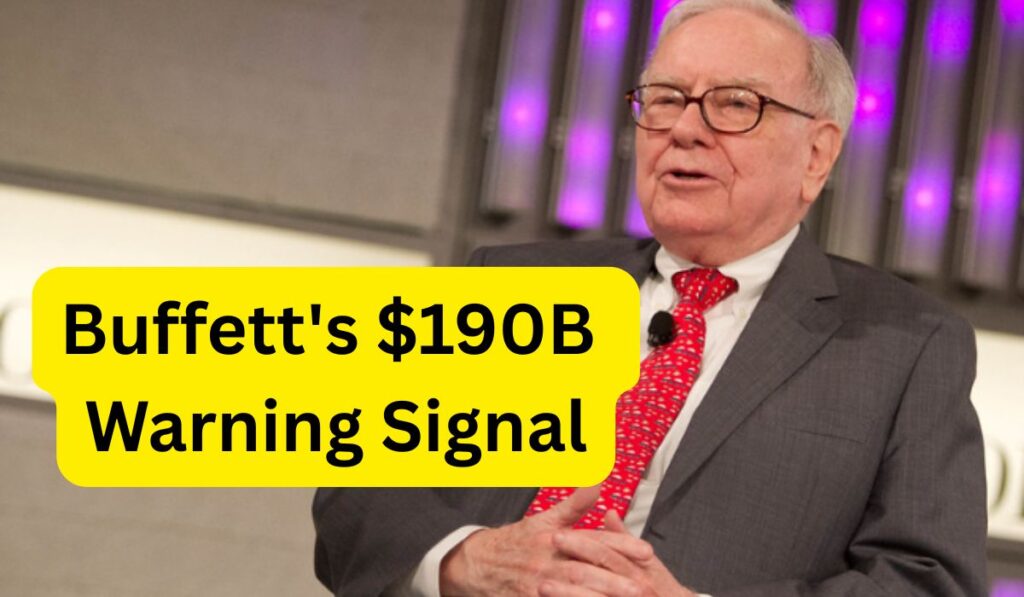Warren Buffett‘s Berkshire Hathaway has divested over $6 billion in stocks, and this isn’t a routine portfolio adjustment. The Oracle of Omaha is sitting on nearly $190 billion in cash reserves, the highest level in the company’s history. This extraordinary positioning represents one of the clearest warning signals from the legendary investor in years.
The Magnitude of Buffett’s Defensive Stance
What makes this development particularly significant is the scale of capital being held in reserve. Berkshire Hathaway has accumulated nearly $190 billion in cash rather than deploying capital into new ventures or expanding existing holdings, a stark departure from typical behavior of an investor confident in current market conditions.
Looking at Buffett’s historical investment philosophy, he’s built his reputation on long-term value and strategic acquisition. This recent massive sell-off represents a shift in outlook, with Berkshire accumulating cash instead of investing it. When the world’s most successful value investor chooses preservation over opportunity, the market takes notice.
The pattern emerging from this data reveals more than just portfolio rebalancing. Buffett’s decision to hold such substantial cash reserves rather than invest them serves as a strong indicator that he sees potential headwinds ahead, suggesting the current landscape might not offer the favorable conditions he typically seeks.
What This Means for Market Participants
Buffett’s actions have consistently spoken louder than his words throughout his decades-long career. His current strategy is sending a clear message that the market environment appears fraught with risk. This isn’t about crystal ball predictions—it’s about understanding positioning from someone who has navigated multiple market cycles with extraordinary success.
Buffett’s approach has always centered on preserving capital and seeking opportunities when they are undervalued. When he steps back and amasses cash, it signals he’s evaluating risk and adapting strategy. The key insight here: he’s not finding the undervalued opportunities that would justify deploying nearly $200 billion in available capital.
What becomes clear from examining these developments is the defensive nature of this positioning. Berkshire isn’t just trimming positions—it’s building a war chest for a future buying opportunity. Historically, Buffett’s most profitable investments have come during periods of market distress when quality assets trade at deep discounts.
The Strategic Implications
This move by Berkshire Hathaway represents a thoughtful pause, inviting investors to review their own financial strategies and consider the importance of diversification, understanding that market cycles are a natural part of investing.
The data suggests we’re in a period where even the most skilled capital allocators are finding limited attractive opportunities. When someone with Buffett’s track record chooses cash over deployment, it reflects a risk-reward calculation that doesn’t favor aggressive positioning.
While not everyone manages billions, the principles of prudence and careful consideration remain universally applicable. The question facing investors: are you positioned for a potential market dislocation, or are you fully deployed in an environment where one of history’s greatest investors is holding record cash levels?
What to Watch Going Forward
The critical factor to monitor is how Berkshire deploys this capital. Buffett doesn’t accumulate cash to sit idle indefinitely—he builds reserves to strike when opportunities emerge. His patience in waiting for the right moment has consistently generated exceptional returns.
This positioning also reveals something about valuation concerns. At current market levels, Berkshire apparently finds its own stock buybacks and cash accumulation more attractive than available acquisition targets or new equity positions. That valuation assessment carries significant weight coming from an investor renowned for identifying intrinsic value.
The market landscape continues evolving, but Buffett’s message through action remains unmistakable: caution and capital preservation now, opportunity deployment later. For investors navigating today’s environment, that’s a signal worth understanding deeply.

